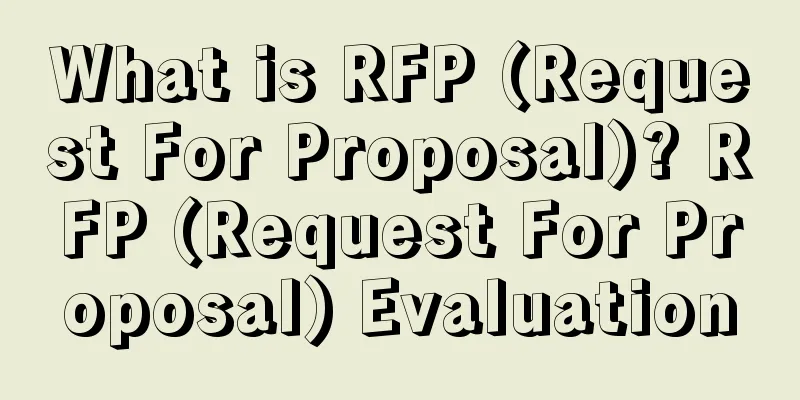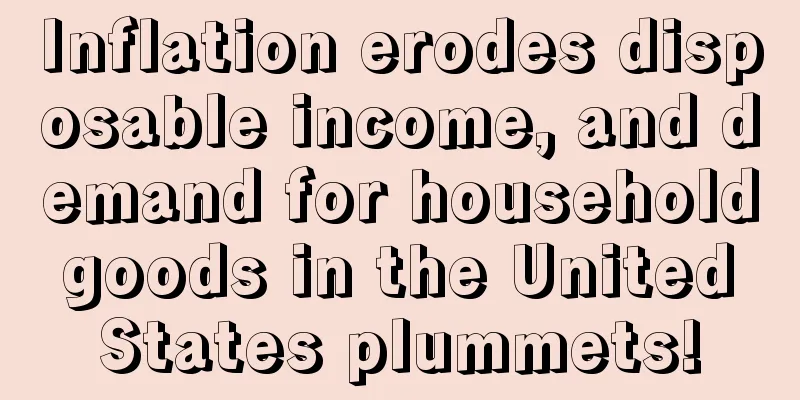What is RFP (Request For Proposal)? RFP (Request For Proposal) Evaluation

|
RFP (Request For Proposal) is a comprehensive and detailed statement to the service provider from the customer's perspective about the preparations that should be made to meet the identified needs. In other words, the RFP is a proposal issued by the customer to the service provider to explain how to meet the identified needs. It is the first written document for the customer to establish formal contact with the service provider, also known as a tender document. About RFP RFP is usually drafted by the client, mainly describing the client's needs, conditions and specific requirements for the project tasks. A complete RFP mainly includes the work description of the project that meets its needs, project requirements, expected project goals, customer supply terms, payment methods, contract form, project time, project application requirements, etc. A good demand proposal allows the service provider to accurately grasp the products or services that customers expect. Of course, it is not necessary to prepare a formal demand proposal in all cases. When the needs of a company are met by internal development projects, the process seems to become much simpler. At this time, more verbal communication and information transfer are needed, rather than wasting precious time on demand proposals that only serve to transfer information. For example, when a software development company feels that the company's original financial analysis system is far from meeting the increasing business needs, it can directly ask the software development team to develop it. At this time, it only needs to verbally convey the relevant requirements to the software development team. Writing requirements When writing an RFP, you must be responsible and serious, with specific content and concise language. It must meet the following requirements: 1. Write the word “Proposal” in the middle of the first line. 2. Write the name of the person who will accept the suggestion. 3. Main text: (1) The reason or starting point for the suggestion, which is convenient for the other party to consider. (2) Specific matters proposed. 4. Express the wishes of the proposer. 5. Write words of respect at the end, such as "Best regards" etc. 6. Write the name of the proposer and the date the proposal was written. Format structure 1. Title. 2. Title. 3. Main text (introduction, main body, conclusion). 4. Signature and time. Guidelines The RFP must state the project objective or purpose, including any reasonable information or background information that may be useful to the contractor so that the contractor can prepare an appropriate proposal. The following guidelines are used to draft a formal RFP: 1. A Statement of Work (SOW) must be provided. 2. Customer requirements must be included to define specifications and attributes. 3. It should state what deliverables the customer expects the contractor or project team to provide. 4. Any items to be provided by the customer should be listed. 5. Explain the content that requires customer approval. 6. It can indicate the type of contract the customer wishes to adopt. 7. You can indicate the payment method the customer wishes to use. 8. Indicate the schedule required to complete the project. 9. Provide guidance and explain the format and content of the contractor’s application. 10. Indicate the deadline by which the client expects potential contractors to submit their applications. 11. Can include evaluation criteria. necessity RFP is a requirement specification prepared by the customer to ensure that the supplier understands the project requirements and provides a project proposal based on this. Although it cannot ensure that the customer can obtain the ideal solution based on this, it can help the customer find the system preparation that is as close to their own needs as possible. Its purpose is to start from the customer's own perspective, through a comprehensive and detailed statement, so that the developer or project team understands what the customer wants and meets the customer's identified needs at a feasible price. For some clients with smaller budgets, developers are often reluctant to spend time preparing a formal proposal. In this case, the client's demand proposal becomes very important. In fact, no matter how big or small the project is, it is necessary to write a demand proposal. 1. RFP needs to describe the user's goals and needs. The process of preparing a demand proposal is also a process for customers to further clarify their goals and needs, and thereby build a bridge for in-depth communication between customers and suppliers. 2. The RFP can save time in selection and make it easier to compare suppliers. The information provided by the customer to all bidding suppliers is the same, avoiding repeated communication with each developer. At the same time, with the RFP as a benchmark, the customer can constrain each developer to submit a proposal in a consistent format to improve the comparability between suppliers. 3. RFPs can avoid potential omissions. When preparing a RFP, clients often overlook some important factors because they are too focused on specific details. After receiving the RFP, some suppliers may proactively question such omissions to remind clients. Some developers may even propose some good ideas that are not included in the RFP to expand clients' thinking in order to make their proposals more attractive. General Principles The requirements proposal should be written by the user, but due to various objective factors, it is difficult to do so. Therefore, it is often written by the user and the project team together. There is no formulaic method for writing an excellent project requirements proposal, and a lot of practical experience is required. The following are several principles to grasp when writing a requirements proposal: 1. Requirements should be correct. Each requirement must accurately describe the functionality to be delivered. 2. Requirements should be feasible. The requirements of the project should be achievable under limited resources (known capabilities, limited systems and their environment). 3. The requirements should be necessary. Each requirement in the demand proposal should have a corresponding source. 4. Requirements should have priority. Priority is established by the client or its agent and the project team after consultation. Generally, there are three levels of priority: high priority; medium priority; low priority. 5. Requirements should be clear. Requirements should not be ambiguous. Avoid using words that are clear to the person drafting the project requirements proposal but vague to others. Example For example, the Federal Railroad Administration (FRA) issues a call for proposals to finance, design, build, operate, and maintain a high-speed rail (HSR) system. Interested parties submit proposals that meet the documentation requirements. Based on the proposals received by the deadline, the Department of Transportation (DOT) establishes committees to further review and develop the proposals. DOT selects the proposal that best meets its goals and hires a company to do the work. |
<<: What is worth buying? What is worth buying review
>>: What is Amazon Merchant Manager? Amazon Merchant Manager Review
Recommend
Mercado Libre is the preferred online shopping platform for Mexicans! Amazon ranks second!
<span data-shimo-docs="[[20,"获悉,根据联邦电信研究所(...
Packaging not up to standard? See how these sellers solved it
As shopping habits become more and more important...
What is Tumblr? Tumblr Review
Tumblr (Chinese name: Tumblr) was founded in 2007 ...
What is Kakaku? Kakaku Review
Kakaku (Japan Price Network) was established in 19...
How to choose between FBA and FBM? After reading this article, you may get the answer!
FBA Advantages 1. Once FBA products are listed, y...
Sellers, please note! Starting next year, European products will need this, otherwise they will be banned from sale!
The following article comes from Seller Growth VAT...
What is Jiji? Jiji Review
Jiji is one of the most popular online platforms i...
What is Vente-privée? Vente-privée Review
Vente-privée is the largest fashion e-commerce pla...
Attention! Amazon is strictly investigating the behavior of refurbishing listings!
Recently, Amazon’s regulatory measures on listing...
UPS's on-time delivery rate during peak season is as high as 97.5%, exceeding FedEx and USPS!
It is learned that recently, the US express compan...
Amazon makes money entirely through advertising, and sellers have become lambs to be slaughtered!
Amazon is the leader in cross-border platforms. In...
What is eCommerce website terminology? ECommerce website terminology review
Common terms used in cross-border e-commerce. B2B ...
What is KUL? KUL Review
KUL is an affordable e-commerce platform launched ...
Or is it a new turning point? Net profit is nearly 800 million, and the revenue growth in the first half of the year is over 50%!
▶ Video account attention cross-border navigation ...
The wave of product returns in the US is coming! Is there a mystery behind it?
There have been a lot of things happening in the U...









